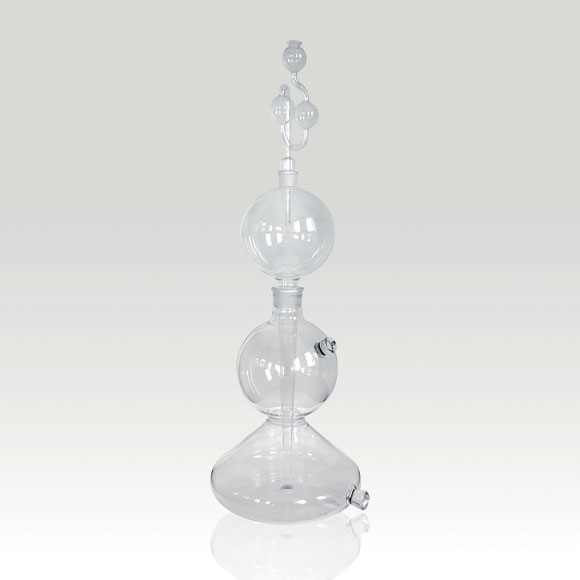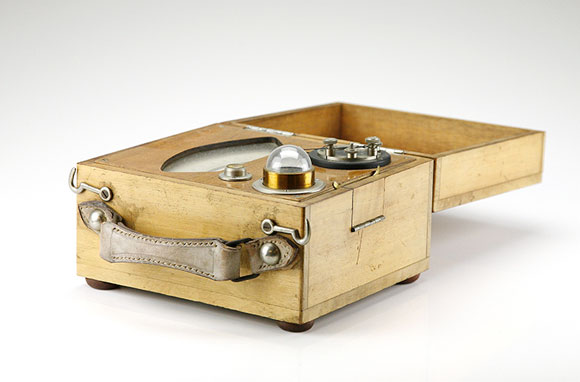-
English (US)
Choose your OTT HydroMet brand and region:



1844 - Kipp Gas Generator

1927 - Moll-Gorczynski Solarimeter
Quality and innovation have been hallmarks of Kipp & Zonen since 1830, when founder Dutch pharmacist Petrus Jacobus Kipp, opened his instrument business.
In 1844, he developed an apparatus called the Kipp generator, designed for the preparation of small volumes of gases, and became widely used around the world.
After Kipp’s death in 1864, his wife and one of their sons carried on the business under ‘Kipp & Zoon’ (son). In 1866 two sons, Anthonius Johannes (instrument-maker) and Wilhelmus Arnoldus (pharmacist), continue the firm under the name Kipp & Zonen (sons).
In 1923 Prof. Dr. Willem Jan Henri promotes the thermopile at a meteorological congress in Utrecht. Dr. Ladislas Gorczynski (Meteo Warsaw) is interested and constructs a thermo-electric pyrheliometer and makes the first daily curves of direct solar radiation with his recording galvanometer. Both scientists worked together to create the first pyranometer in 1927.
In 2017, Kipp & Zonen became a part of Hach, a subsidiary of Veralto Corporation, and is now one of the strong global product brands that make up OTT HydroMet.
Kipp & Zonen has become the worldwide specialist in solar and sky radiation, providing class-leading instruments for measuring solar radiation and atmospheric properties in
meteorology, climatology, hydrology, industry, renewable energy, agriculture and public health and help customers monitor atmospheric properties related to climate change, classical meteorology, available water budget and more.
The array of high-quality solar and atmospheric science instruments feature all-weather radiometers, data loggers, and complete measurement systems. All instruments are fully traceable to applicable World Meteorological Organization (WMO) and ISO standards.
Complete range of high-quality instruments for the measurement of every part of the solar spectrum, from the ultraviolet to the far infrared.
Sophisticated instruments for the measurement of specific atmospheric parameters such as stratospheric Ozone, UV spectra, and evapo-transpiration.
Kipp & Zonen is certified to ISO 9001:2008. Our certified instruments are serviced at ISO quality standards and our calibrations are traceable to the World Radiometric Reference at the World Radiation Centre in Davos, Switzerland.
Find out how our instruments are being used all over the world in different environments and climates for meteorology, climatology, hydrology, climate research, solar energy, environmental testing, greenhouse control, building automation, and more.
Monitoring the solar radiation plays an important role in analyzing the efficiency of the cells and evaluating optimal locations for solar farms. Read about PV-related products that measure solar irradiance, soiling, temperature, precipitation, and wind.
Solar energy PV installations on building roofs are really taking off¬ in many parts of the world. See how you can affordably measure solar irradiance and panel temperature for rooftop PV installations with Kipp & Zonen.
Solar radiation measuring instruments for research and development, production quality control, determination of optimum locations, monitoring the efficiency of installed systems, and predicting the system output under various sky conditions.
Read how our instruments are making a difference in our world through real-life scenarios.
Weather conditions have a huge influence on photovoltaic output. Even intermittent cloud cover can have a dramatic effect on incident solar energy, while other factors like air temperature, wind direction and speed, precipitation, humidity and air pressure can all influence the efficiency of solar cells. Monitoring weather conditions accurately is crucial to understand variations in PV plant performance.
This largest European solar plant, which has been in operation since April 6th, has an installed capacity of 500 MW. It is owned by Iberdrola, a Spanish multinational electric utility company based in Bilbao. This large solar plant is part of Iberdrola’s strategy in Extremadura that foresees an extension of up to 2,000 MW in the region.
Observing the elements is key to better understanding our planet. This blog tells the manifold stories of experts working in environmental monitoring with help of our sensors and solutions.
Solar demand is surging. Modern PV plants need fast responding precise solutions that are easy to install and integrate, ones that will last.
To keep all instruments aligned with the solar orbit, automatic sun trackers follow the path of the sun. This article helps you to choose the right sun tracker model for your purpose.
Soiling sums up to losses of several billion dollars every year. In this episode of OTT CAST, we discuss the sources of soiling and ways to mitigate its impact on solar energy generation.